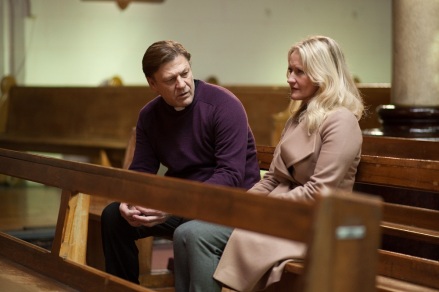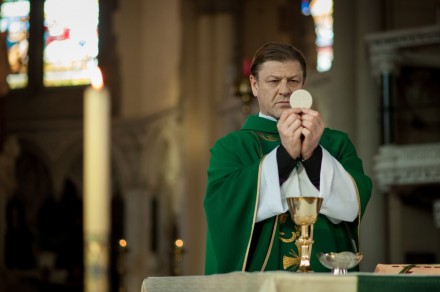By Josiah Wampfler
“Don’t regret. Remember”
It is a bit hard to put into words how emotionally ravaging Celine Sciamma’s “Portrait of a Lady on Fire” is. Unrequited and ill-fated love has long been a staple of romantic films, especially those of the period variety, but there is something particularly affecting about Sciamma’s film. It is one of those films that completely takes you over from the very beginning and steals your breath by the end. It is, put simply, stunning.
Set on an isolated island off the coast of France, the young Marianne is hired to paint a portrait of Héloïse, who is set to be wed to a man from Milan. The catch is – which Marianne discovers once she reaches the island – that she must paint this portrait without Héloïse knowing she is a painter, meaning that she must paint her from memory in between taking walks around the island with her. As the two spend more time together though, an ill-fated love story begins.
As with any romantic film, much of the success of the film lies in the chemistry between the actors and the skill of those actors to portray the emotion not only in the lines of dialogue, but in between the lines as well. On this front, “Portrait of a Lady on Fire” succeeds in spades. The two leading women, Noémie Merlant (Marianne) and Adèle Haenel (Héloïse), give absolutely transcendent performances.
The film is much more inside of Marianne’s experience, which puts extra pressure on Merlant to portray an inner dialogue that can be challenging in a visual medium. But, what Merlant is able to do with the raise of an brow, the tremble of her lip, the quick dart of her eyes, or the slight turn of her head is truly impressive. She lets us in on all the contours of this growing love affair with all these little gestures. A lesser film would have included a narration to help the audience understand the arch of the romance, but Sciamma instead allows Merlant’s non-verbal performance fill in the space. It is a powerhouse performance, both tantalizing and lachrymose, and it allows Sciamma to be frugal with the more overt sexual imagery, putting more emphasis on the smaller moments of sensuality between the two women. The result is extraordinarily titillating.
Haenel for her part, matches Merlant’s performance with a masterclass of her own. Héloïse is much harder to read, and for good reason. Part of the sensuality of romances is the guessing game that happens before two people confirm their feelings to one another. Haenel’s performance is much more stoic and reserved, but she also shares Merlant’s talent for non-verbal performance. I am convinced that you could watch “Portrait of a Lady on Fire” with no sound or subtitles, singularly focused on the eyes of the two women and largely understand the thrust of the narrative. Sciamma has crafted a rare romantic film in which, though their is nudity, it is rarely used for overtly sensual reasons. For “Portrait of a Lady on Fire”, the eyes are the windows into these women’s souls and therefore where the sensuality and allure of the film lie.
There are two people behind the camera that ensure these performances are part of a stunning whole: The auteur and her visual craftswoman, Writer and Director Celine Sciamma and her cinematographer Claire Mathon. The screenplay for the film, endlessly quotable as any good period piece should be, is beautifully wrought. The dialogue is poetic without being unrealistic. The pacing is deliberate, but pitch perfect, never becoming too indulgent. And Mathon’s camera seems to choose the perfect way to capture every scene to ensure maximum beauty and emotional resonance. It is a shame that Sciamma as a director and screenwriter and Mathon as a cinematographer were overlooked by the Academy this year. “Portrait of a Lady on Fire” owes so much of its success to the incredible work of these two women.
Queer cinema in the last several years has sees to have had a bit of a resurgence, with films like “Moonlight”, “A Fantastic Woman”, “Call Me By Your Name”, and more gaining critical acclaim. Sciamma has quite assuredly made a film that stands toe to toe with those others and is not only an example of excellent queer cinema, but of of excellent cinema in general. Completely overcome and out of breath, just two words were running through my head when “Portrait of a Lady on Fire” cut to black on my TV screen. The first word was stunning. The second: masterpiece.






























